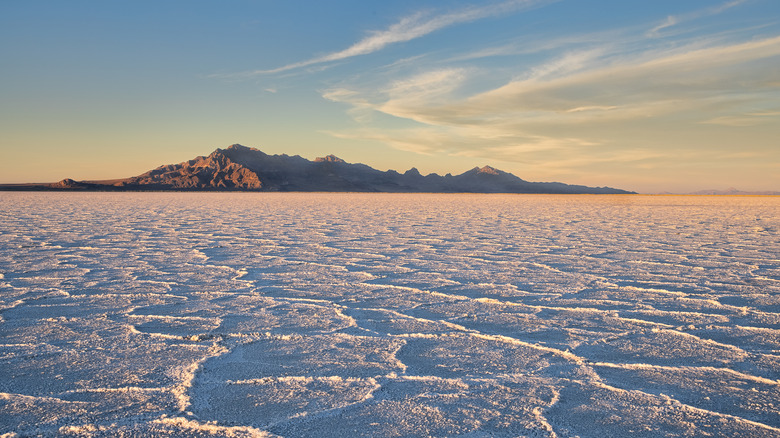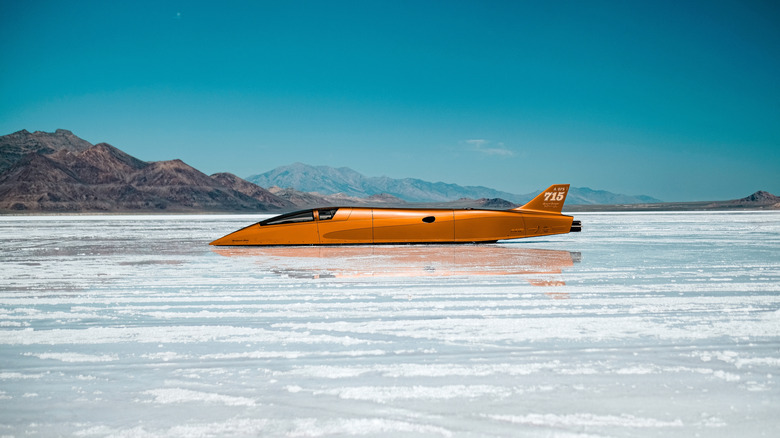Hidden Along The Nevada-Utah Border Is A Giant, One-Of-A-Kind Salt Flat That Looks Like A Surreal Dream
Utah has its fair share of geological wonders, from the breathtaking rock formations at Arches National Park to the vibrant "Island in the Sky" in Canyonlands. But travel a little further afield from these landmarks to northwestern Utah, on the border of Nevada, and you will discover another wonder that will blow your mind. The Bonneville Salt Flats, which form part of the Great Salt Lake Desert, stretch over 30,000 acres, defined by a landscape so flat the horizon seems like it might be on the edge of the world.
The salt flats, located about 110 miles from Salt Lake City, were formed as the last Ice Age came to an end over 10,000 years ago. Once covering around a third of Utah, the ancient Lake Bonneville began to evaporate, leaving in its wake a thick layer of salt, much like the table salt you add to your food. Today, the Bonneville Salt Flats are estimated to hold approximately 147 million tons of salt and are defined by a crusty white expanse of pancake-flat terrain. They are among the largest salt flats in North America.
The flats and ancient lake are named after Benjamin Louis Eulalie de Bonneville, an American officer who mapped much of the American West in the early 1800s. Whether Bonneville ever saw the salt flats himself is subject to debate, but we know that one of his employees — fur trapper and explorer Joseph R. Walker — crossed the northern perimeter, and may have named them after his boss. To Walker, the salt flats must have seemed like they literally came from another planet.
Best things to do at Bonneville Salt Flats
Bonneville Salt Flats is renowned for its famous speedway. Since the early 20th century, the flats were used by eager racers testing the speed limit of their automobiles. It was here at the Bonneville Speedway that British racer, Sir Malcolm Campbell, set a land-speed record in 1935, hitting 301.13 miles per hour in his "Blue Bird" car. Amateurs continue to attempt to break further land-speed records at the site today, and even compete at the Bonneville Motorcycle Speed Trials. The current record was set in 2010 by Rocky Robinson, who achieved a mind-boggling average speed of 376.363 miles per hour.
The amateur competition takes place every August and admission costs $25 per day or $60 for the whole week (at the time of publication). There are also other events hosted at the speedway, including Speed Week, where some spectators bring their souped-up cars to show off to the crowd. It is important to remember that if you attend one of these events, bring a sunhat, sunscreen, and sunglasses, as the salt flats are reflective (like snow) and there is zero shade.
The salt flats are a photographer's dream, and the location has been used in several major movie blockbusters, including "Independence Day" and "Pirates of the Caribbean: At World's End." It is an incredible place to simply take in the horizon and admire the general majesty of the landscape. The salt flats are certainly worth adding to your itinerary if you are planning to embark on a Nevada road trip. One important thing to bear in mind is that no camping is permitted at the salt flats, nor are there any facilities or services (except during planned events), so you will need to plan ahead.

